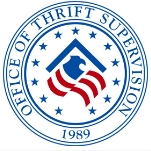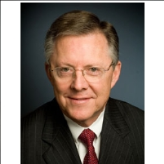Part of the Department of the Treasury, the Office of Thrift Supervision (OTS) is charged with regulating banks known as thrifts, or savings and loans. OTS monitors thrifts and their holding companies to ensure their solvency and compliance with consumer laws. Currently, OTS oversees 831 thrifts with assets of $1.57 trillion, as well as 470 holding companies with US assets of $8.5 trillion. Examples of financial institutions that OTS monitors are Capitol One FSB, Chevy Chase Bank, Citicorp Trust Bank FSB, ING Bank FSB and Washington Mutual Bank. OTS has found itself in the thick of the mortgage and housing crisis, and it has offered suggestions for resolving the mess. But like its predecessor, which was dismantled by federal officials in the wake of the savings and loan crisis of the 1980s, OTS is in danger of being shutdown as part of reforms being discussed in Washington, DC.
In 2008, the country was rocked by one of the largest housing crisis in US history, which threatened to bring down numerous banks and thrifts. By the summer, federal regulators had stepped in and closed several national banks, including IndyMac of Pasadena (see Controversies), First National Bank of Nevada and First Heritage Bank of Newport Beach, CA. Some banking experts predicted that approximately 100 financial institutions would fail by the time the crisis was over. Others, however, described such an estimate as
, arguing the final number would be much higher.
OTS receives no money from Congress. Its budget is funded through assessments paid by the industry.
|
Emcor Group, Inc.
|
$17,367,810
|
|
Apptis Inc.
|
$7,409,425
|
|
Insys, Inc.
|
$4,540,733
|
|
US Government
|
$3,498,151
|
|
Prudential Financial, Inc.
|
$3,411,900
|
|
Dell Inc.
|
$2,461,503
|
|
Thomas Ho Company
|
$2,268,000
|
|
Xerox Corporation
|
$2,247,348
|
|
Government Acquisitions Inc.
|
$2,103,626
|
|
Domus Holdings Corporation
|
$1,862,433
|
Federal authorities estimated that the takeover of IndyMac, which had $32 billion in assets, would cost the FDIC $4 billion to $8 billion. Regulators said deposits of up to $100,000 were safe and insured by the FDIC. The agency’s insurance fund has assets of about $52 billion.
Reich went on to publicly say that there was a reason why federal banking regulators like OTS don’t publish their findings of thrifts and banks. “We believe it is critically important to maintain the confidentiality of examination and supervision information. Dissemination of incomplete or erroneous information can erode public confidence, mislead depositors and investors, and cause unintended consequences, including depositor runs and panic stock trades. Rumors and innuendo cause damage to financial institutions that might not occur otherwise and these concerns drive our strict policy of privacy.”
Sen. Schumer defends comments on IndyMac
(Associated Press)
Aggressive Fed Rules Challenge Credit Cards
(by Nancy Trejos, Washington Post)
- Table of Contents
- Overview
- History
- What it Does
- Where Does the Money Go
- Controversies
- Suggested Reforms
- Comments
- Leave a comment



John M. Reich served as the director of the Office of Thrift Supervision from August 9, 2005, until March 2009. Reich also served as a member of the board of directors of the Federal Deposit Insurance Corporation, which he served on since January 2001, including as vice chairman and acting chairman.
- Latest News
- D.C. Public Schools will Teach all Second-Graders to Ride a Bike
- New Rule in Germany Limits Sales of Sex-Themed E-Books to 10pm to 6am
- What Happened to the 6-Year-Old Tibetan Boy the Chinese Government Kidnapped 20 Years Ago?
- U.S. Ambassador to Turkey Photoshops his Hair Color to Mock Turkish Mayor
- Mystery Artist Calls Attention to Unfixed Potholes by Drawing Penises around Them
Part of the Department of the Treasury, the Office of Thrift Supervision (OTS) is charged with regulating banks known as thrifts, or savings and loans. OTS monitors thrifts and their holding companies to ensure their solvency and compliance with consumer laws. Currently, OTS oversees 831 thrifts with assets of $1.57 trillion, as well as 470 holding companies with US assets of $8.5 trillion. Examples of financial institutions that OTS monitors are Capitol One FSB, Chevy Chase Bank, Citicorp Trust Bank FSB, ING Bank FSB and Washington Mutual Bank. OTS has found itself in the thick of the mortgage and housing crisis, and it has offered suggestions for resolving the mess. But like its predecessor, which was dismantled by federal officials in the wake of the savings and loan crisis of the 1980s, OTS is in danger of being shutdown as part of reforms being discussed in Washington, DC.
In 2008, the country was rocked by one of the largest housing crisis in US history, which threatened to bring down numerous banks and thrifts. By the summer, federal regulators had stepped in and closed several national banks, including IndyMac of Pasadena (see Controversies), First National Bank of Nevada and First Heritage Bank of Newport Beach, CA. Some banking experts predicted that approximately 100 financial institutions would fail by the time the crisis was over. Others, however, described such an estimate as
, arguing the final number would be much higher.
OTS receives no money from Congress. Its budget is funded through assessments paid by the industry.
|
Emcor Group, Inc.
|
$17,367,810
|
|
Apptis Inc.
|
$7,409,425
|
|
Insys, Inc.
|
$4,540,733
|
|
US Government
|
$3,498,151
|
|
Prudential Financial, Inc.
|
$3,411,900
|
|
Dell Inc.
|
$2,461,503
|
|
Thomas Ho Company
|
$2,268,000
|
|
Xerox Corporation
|
$2,247,348
|
|
Government Acquisitions Inc.
|
$2,103,626
|
|
Domus Holdings Corporation
|
$1,862,433
|
Federal authorities estimated that the takeover of IndyMac, which had $32 billion in assets, would cost the FDIC $4 billion to $8 billion. Regulators said deposits of up to $100,000 were safe and insured by the FDIC. The agency’s insurance fund has assets of about $52 billion.
Reich went on to publicly say that there was a reason why federal banking regulators like OTS don’t publish their findings of thrifts and banks. “We believe it is critically important to maintain the confidentiality of examination and supervision information. Dissemination of incomplete or erroneous information can erode public confidence, mislead depositors and investors, and cause unintended consequences, including depositor runs and panic stock trades. Rumors and innuendo cause damage to financial institutions that might not occur otherwise and these concerns drive our strict policy of privacy.”
Sen. Schumer defends comments on IndyMac
(Associated Press)
Aggressive Fed Rules Challenge Credit Cards
(by Nancy Trejos, Washington Post)
Comments



John M. Reich served as the director of the Office of Thrift Supervision from August 9, 2005, until March 2009. Reich also served as a member of the board of directors of the Federal Deposit Insurance Corporation, which he served on since January 2001, including as vice chairman and acting chairman.
- Latest News
- D.C. Public Schools will Teach all Second-Graders to Ride a Bike
- New Rule in Germany Limits Sales of Sex-Themed E-Books to 10pm to 6am
- What Happened to the 6-Year-Old Tibetan Boy the Chinese Government Kidnapped 20 Years Ago?
- U.S. Ambassador to Turkey Photoshops his Hair Color to Mock Turkish Mayor
- Mystery Artist Calls Attention to Unfixed Potholes by Drawing Penises around Them





Comments